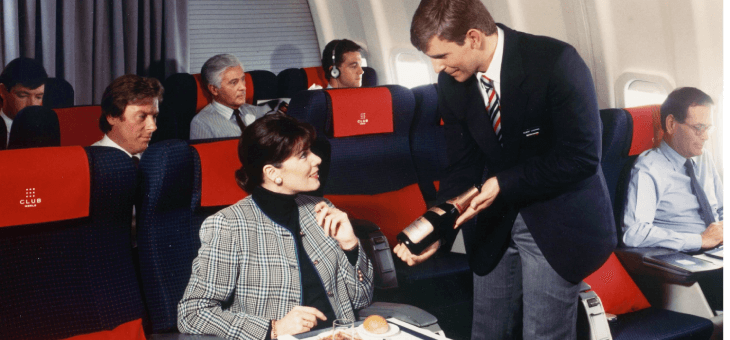Nowadays air travel is commonplace – a means for getting from A to B not much more remarkable than catching a train.
Just 30 years ago though, flying was a very different experience. It was expensive, glamorous and could involve meat carving sets and fancy crockery.
We spoke to two of the UK’s largest airlines, British Airways (BA) and Virgin Atlantic, to find out what flying was like back in the 1980s.
Costs were sky high at the start of the 1980s
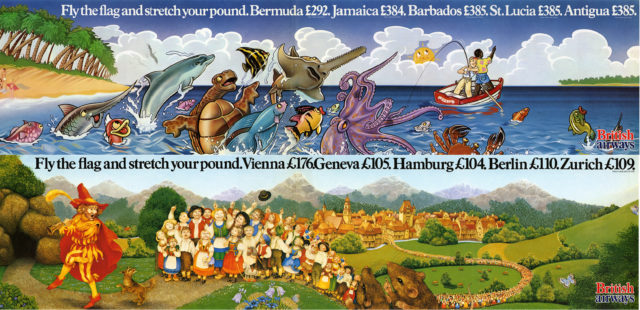
Although fares varied according to destination, air travel anywhere used to be much more expensive.
In 1983, a return flight from London to Barbados was £385 with BA, which sounds okay – until you realise that’s equal to around $2290 in today’s money. For just one person. Today, the nine hour-flight costs around $700.
“People sometimes saved up for years to go on a flight. It really was a luxury,” says Josephine Hart, who joined BA in 1988 as a cabin crew member. “I think I’d only ever been on an aeroplane once before I became an air hostess.”
Read: Flight attendants reveal what to wear for an upgrade
Ordinary people were just discovering plane travel
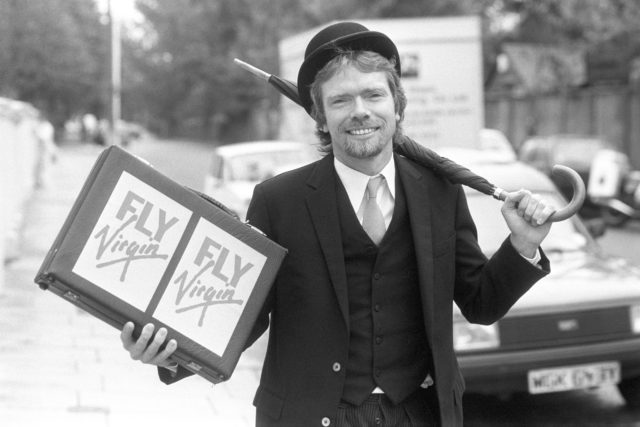
The 1980s saw falling prices, the birth of package holidays and increased competition – both Virgin Atlantic and Ryanair first took to the skies in 1984. Suddenly, flying was not just for the rich.
“In the 1970s, fares were heavily regulated and the airlines largely charged the same prices,” explains Paul Jarvis of the BA Heritage Centre. “In the 1980s, things changed and we moved away from the man in the street going to Benidorm, he was now seriously considering Barbados.”
Flying still wasn’t cheap, however, and holidays tended to happen just once a year. “If you went on holiday twice a year in the 1980s, you were very middle class,” says Mr Jarvis.
There were far fewer destinations on offer
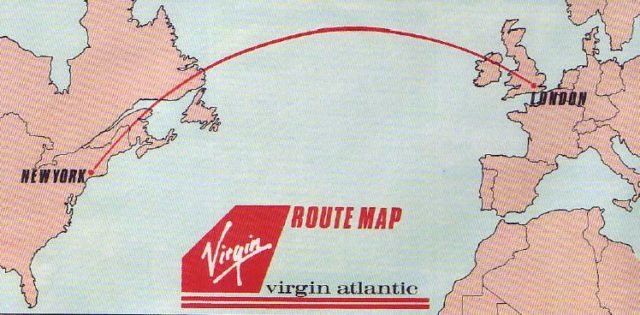
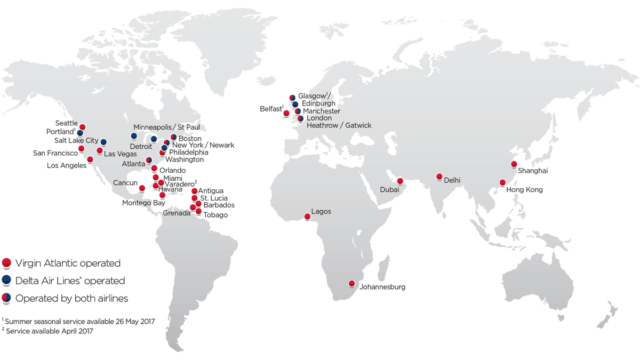
Virgin Atlantic now flies to more than 30 long-haul destinations from the UK. But when it launched, it offered just one route – London to New York – hence the name.
BA offered 140 routes out of London in 1985, compared with 200 now, but it took much longer to reach far-flung places back then.
“We used to go away for up to 21 days, and stop here, there and everywhere, because aircraft couldn’t fly as far as today,” says Ms Hart. “We used to get four or five days off afterwards I think, but it was more of a lifestyle.”
Security checks were sometimes done by hand
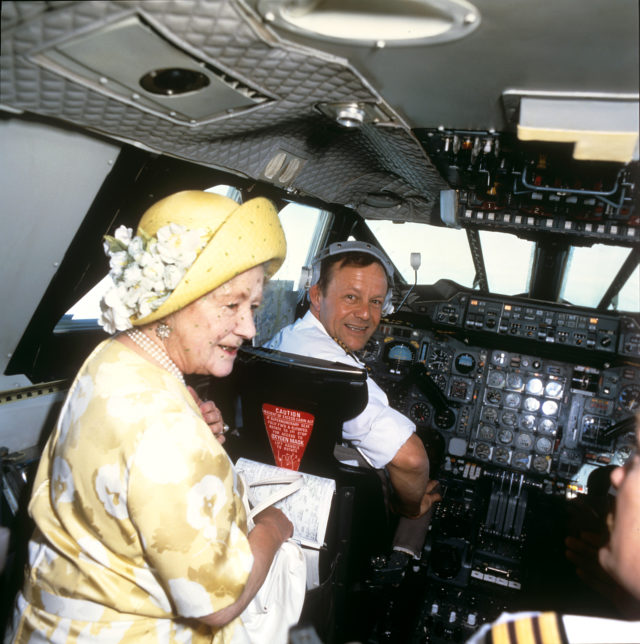
Although X-ray machines were in use, security was generally more rudimentary and checks would sometimes be done by hand.
“There were always regulations on what you could bring on – we would have posters behind the check-in desk saying you can’t take dynamite on, for example,” says Mr Jarvis. “Nowadays, you can’t take on nail clippers or even too much liquid.”
On board, metal cutlery was allowed and staff were able to take visitors to meet the pilots.
“One downside following 9/11 is the fact that people can no longer visit the flight deck in flight,” says Dave Gunner, Virgin Atlantic’s digital media specialist. “Although our pilots will always try and accommodate a quick peek while on the ground, providing it doesn’t disrupt their normal duties.”
Planes had hat racks and wheelie bags were unheard of
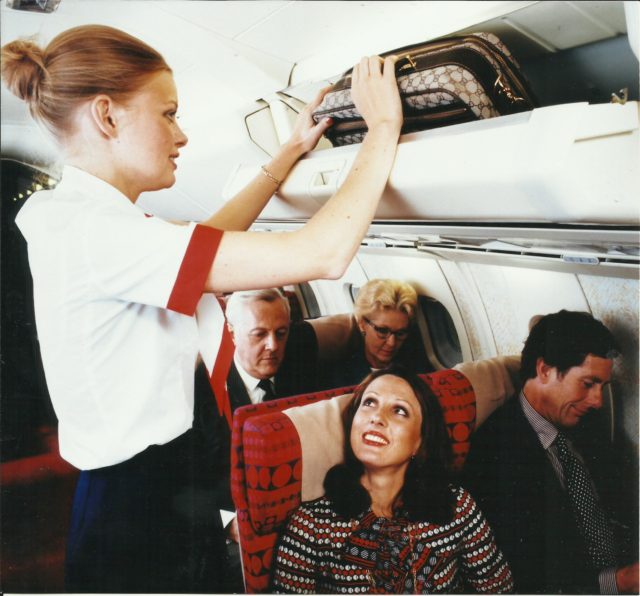
Although baggage did have a maximum weight attached, it wasn’t standardised as it is today, with the amount you could bring varying with the route – it would all go in the hold too.
“The overhead lockers used to be called hat racks,” says Ms Hart. “People used to put their hats, coats and much smaller bags in there, rather than bringing on large luggage.”
Wheelie bags, rife in airports now, were not yet popularised.
“I remember when wheels you strapped onto the bag came in and it was such an exciting thing,” says Ms Hart.
Dining in-flight was really quite extraordinary

If you were lucky enough to be in first class, the dining experience was remarkably different.
Back then, staff would carry a meat carving set, using large knives to cut joints of beef or lamb beside your seat, before serving you. Hot gravy would be poured from a jug.
In economy, things were not quite so highly civilised, though meals were usually served on crockery plates.
Read: The secret to better airline food
In-flight entertainment was much simpler
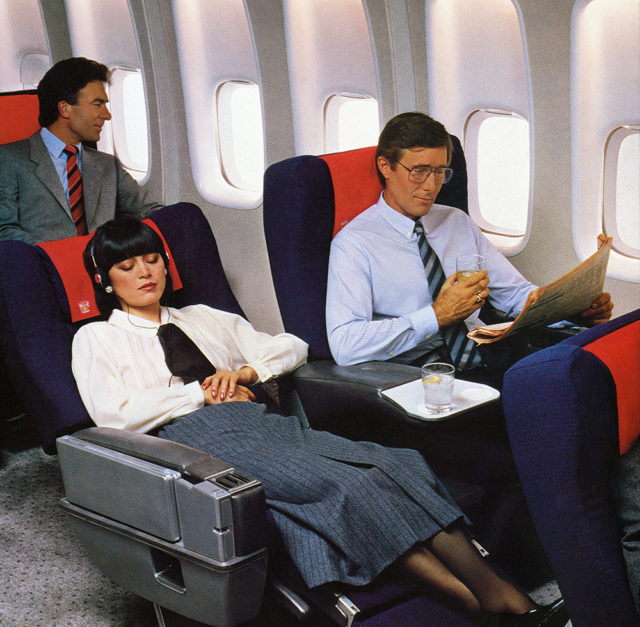
Today, there are often screens in the back of seats and passengers usually have their smartphones and laptops to keep them busy. But in the 1980s, in-flight entertainment mostly meant reading your newspaper or book.
“The movie went on after the meal service on one large screen and everyone would watch the same movie at the same time,” says Ms Hart.
Virgin Atlantic says it was the first to put Sony Video Walkmans in an aircraft, but even these were not introduced until 1989.
Smoking on planes was absolutely fine
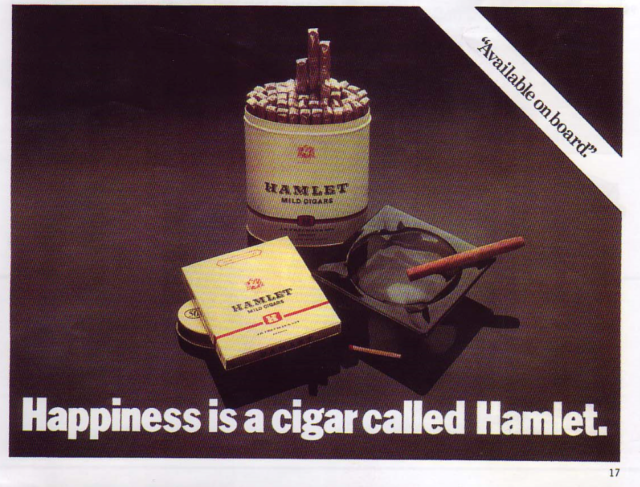
In the 1980s, aircraft were split into smoking and non-smoking areas, with smokers sat at the back of the aircraft – and tobacco was even sold onboard.
“You could see a thick cloud of smoke on the aircraft,” says Ms Hart. “When people finished their meals, they always lit up their cigarettes and, as staff having to serve them, we actually used to find burn holes in our uniform.”

In the UK, cigarettes were not banned from aeroplanes until the 1990s.
Check-in involved handwritten tickets and lots of patience

Checking in was simple in the ’80s. You brought your ticket, queued at the checking desk and they checked your name using a primitive computer before ripping off your boarding coupon.
“With handwritten tickets and big sheets of seat number stickers, the check-in of 1984 was a very different experience,” said Mr Gunner. “Things are much quicker and slicker now.”
Read: What not to touch at the airport
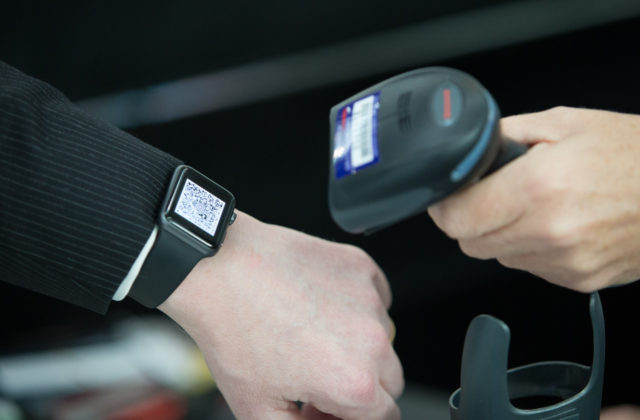
These days, etickets on your smartphone or smartwatch, and even self-service bag-drops, make for less queuing.
People dressed for the occasion and mingled
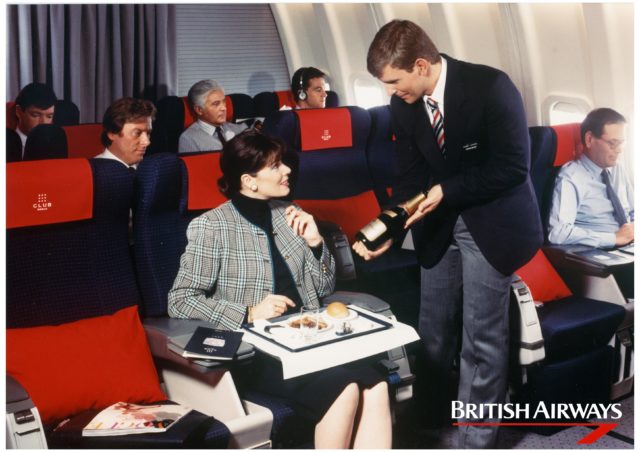
Even for businessmen and women, flying used to be a more formal experience.
“In the 1980s, you wouldn’t think of getting on board without wearing a suit jacket, trousers and a shirt,” adds Mr Jarvis. “Nowadays, businessmen are often scruffy on aircraft.”
As for holiday-goers, flying was not just the journey but a luxury at the heart of their experience.
“It was so rare for people to travel by air back then compared with today, so they were very excited and wanted to talk to everyone there with them,” says Ms Hart. “With smaller prices, it’s run of the mill now – like catching a bus.”
– With PA

